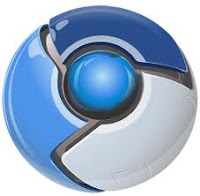Google's Chrome project aka Chromium runs for their Chrome Browser and Chrome OS. Loving its browser, I thought of checking out the OS.
Downloading image
Google Chrome OS, is available only via their partnered OEM's hardware. Hence to try out, how it looks and what's the experience, I started googling around. Chromium OS & Google Chrome OS, share same code base with an exception of later having additional packages to ensure better experience on its partnered OEMs hardware. Chromium OS can be downloaded, compiled & executed. Avoiding all that tricky steps, I looked for readily available image.
Though not much of information available, but whatever available; all pointed towards hexxeh. They seem to be checking out latest version of Chrome OS available on public domain, build it & release a installable image for end consumers.
Installation
Downloading image
Google Chrome OS, is available only via their partnered OEM's hardware. Hence to try out, how it looks and what's the experience, I started googling around. Chromium OS & Google Chrome OS, share same code base with an exception of later having additional packages to ensure better experience on its partnered OEMs hardware. Chromium OS can be downloaded, compiled & executed. Avoiding all that tricky steps, I looked for readily available image.
Though not much of information available, but whatever available; all pointed towards hexxeh. They seem to be checking out latest version of Chrome OS available on public domain, build it & release a installable image for end consumers.
Installation
- I started with its Vanila variant.
- Downloaded & copied image to the USB drive through image writer.
- Plugged USB in to my old HP Laptop (running with 512 MB RAM, Intel Pentium Dual Core processor).
- Booted computer from USB. Saw Google Chrome's logo with text 'Chromium'. Got excited !!!
NOTE: Google Chrome OS has green/yellow/red logo, while chromium OS has blue/bluer/bluest logo. - After few minutes, saw initial screen asking for KeyBoard Language, Network connectivity.
NOTE: Unless, I connected ethernet cable, I could not proceed. For some reason WiFi option was not available. - Next step to configure Google Account. I gave my existing Google account credentials and it started syncing contents.
NOTE: For security reasons, secondary encryption password is prompted before sync can be performed (which can be found in google account dashboard). - Upon syncing & configuring, I was asked to select my logic profile picture (It also pulled up my Google+ profile image).
Experience
Applications installed on Chrome Browser (via Chrome browser App Store) popped up as my applications on the machine. All most all this applications works in browser & hence they worked here equally well. I do not have that many applications installed to have detail analysis on the same.
File Manager: File manager is part of the browser, where all files are visible. UX looks very similar to Google docs listing all files in a collection.
Printer: Printer on cloud. I haven't tried it, so can't comment.
Settings: Could see Ethernet, WiFi, Keyboard, trackpad settings. Again not as a separate application, but all under Chrome Browser page.
Other Info: I could see my computers battery status in bottom right corner. Could not see other hardware or similar details.
Summary
Honestly, as this was not an official Google Chrome's OS image; but a similar variant - It gave me a basic feel of what the OS is all about. An operating system, with a home page and all applications hosted (or embedded) in a browser. Data pulled from my cloud services and processed locally (where-ever applicable). Certain services have support for offline data availability to ensure work continuity especially when no or limited internet connectivity.
Google's official Chrome OS, has pre-bundled extended package like Adobe Flash, Adobe PDF, Google Talk client, 3G Cellular support, etc; which makes the entire OS better.
For users, who can get their all major work done on a browser (Mail, Doc processing, Financial, Image & Video Processing), it seems to be a good option. But hold on - Do one really needs to buy a new hardware for this? May not be... We all use browser in our regular laptop / tablets. Then why a new hardware? May be a trimmed version of hardware like a tablet or ultra books seems to be a good fit.
I'll definitely look forward to use ChromeBook soon.

I tried the Chrome OS VM image when it was released years ago (2009 or early 2010?). At that time, it didn't even feature a file browser or HW settings (It was at a very early stage), if I remember correctly. And nothing else seems different from your description.
ReplyDeleteI wouldn't mind it having it as a quick boot option on my laptop, but apart from that I don't seem to see any reason to use Chrome OS. :P
What sort of 3rd party application support can you expect on this? If you are living a true digital life, it does make sense. But look at what Apple iPhone has done to the App ISV market. In any case, i am not sure if an Always-ON personal computer is something that can be supported, not unless you build more fat into the hardware which may defeat the web only existence philosophy of google. But, they have some of the brilliant minds and I am usually prove wrong :)
ReplyDeleteAren't we almost always-on? To a majority degree. At the same time, learning the hard fact of pockets where zero or limited connectivity is present, support for Off-line use cases has emerged. Have you tried offline cache version of Google docs (Available on Chrome Browser, OS, Mobile). HTML5 app-cache & local data storage are helping in better user-experience.
DeleteThough early adaptation is low, I feel it's too early to discard it.
ReplyDeleteHappy Raksha Bandhan 2015 messages sms
happy raksha bandhan 2015 calendar date
Supergirl episode guide
Supergirl summary review
Season 1 episode 1 of super girl
happy rakshabandhan wishes quotes for sister